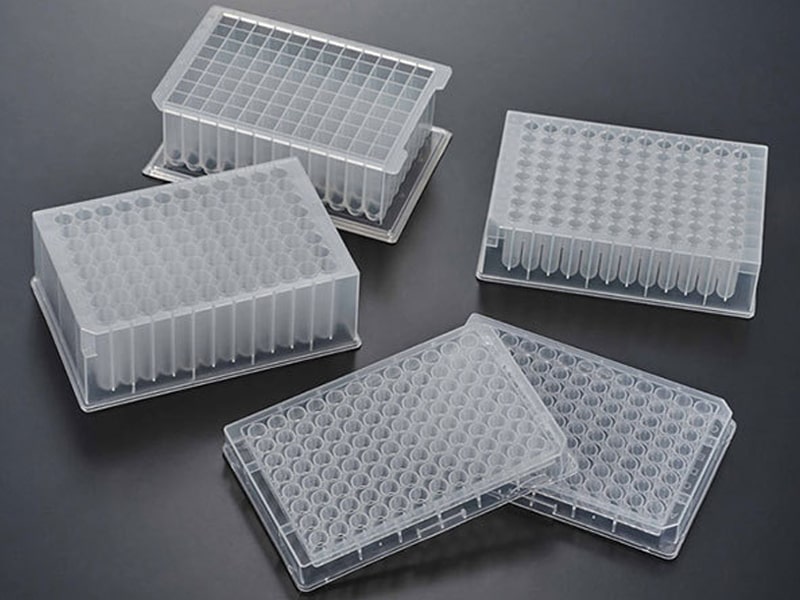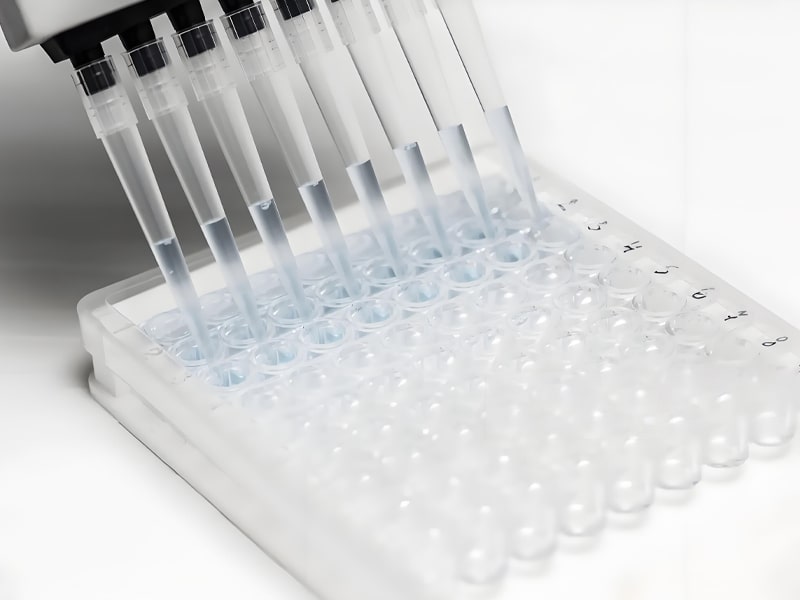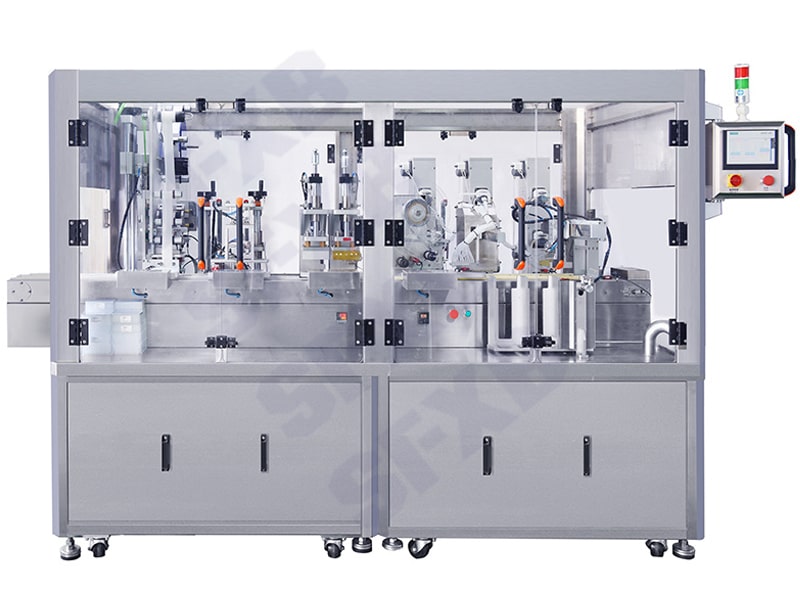In the modern landscape of biological, pharmaceutical, and chemical research, the use of 96-Well plates has become an essential component in laboratories across the globe. These compact, versatile tools facilitate various applications, from drug discovery to diagnostic testing. This article delves into the multifaceted uses of 96-Well plates, the intricacies of the filling process, and the significance of employing advanced filling and sealing machinery in the manufacturing environment. We also explore the state-of-the-art technologies utilized by manufacturers, emphasizing the importance of automation in enhancing accuracy and efficiency.
What is a 96-Well Plate?
A 96-Well plate is a standardized flat plate that contains 96 small wells arranged in an 8×12 grid, typically used to hold liquid samples for a multitude of scientific applications. Each well has a defined volume, usually 200, 300, or 400 microliters, making them ideal for high-throughput screening in biological and pharmaceutical settings. Common materials for 96-Well plates include polypropylene, polystyrene, and various other polymers, chosen for their compatibility with chemical and biological substances.

What Are 96-Well Plates Used For?
96-well plates are versatile tools with applications spanning multiple industries. Here are some of the most common uses:
1. Chemical Filling and Storage
In chemical laboratories, 96-well plates are often used for storing and handling small volumes of chemicals. Their compact size allows researchers to organize numerous samples efficiently, making them ideal for chemical libraries or high-throughput screening (HTS) processes.
2. Pharmaceutical Filing
In the pharmaceutical industry, 96-well plates play a crucial role in drug discovery and development. They are used to test the efficacy and toxicity of compounds, as well as to store pharmaceutical samples for further analysis. The ability to handle multiple samples in a single plate saves time and resources.
3. Biological Reagents Filling
Biological reagents, such as enzymes, antibodies, and DNA samples, are often stored and processed in 96-well plates. These plates are particularly useful in molecular biology, where high-throughput assays require precise and organized handling of biological materials.
4. High-Throughput Screening (HTS)
HTS is a method used to quickly conduct millions of chemical, genetic, or pharmacological tests. 96-well plates are a cornerstone of HTS, enabling researchers to test multiple compounds or samples in a single experiment.
5. Automated Laboratory Processes
Modern laboratories often rely on automation to streamline workflows. 96-well plates are compatible with automated filling and sealing machines, which can precisely fill, seal, and label the plates, reducing human error and increasing productivity.

How to Fill a 96-Well Plate
Filling a 96-well plate requires precision and care, especially when dealing with sensitive chemicals or biological reagents. Below is a step-by-step guide on how to fill a 96-well plate effectively:
1. Prepare Your Materials
Source of liquid:Ensure the chemical, pharmaceutical, or biological reagent is ready for filling.
Pipettes or liquid handling systems:Manual pipettes or automated liquid handling systems can be used depending on the scale and precision required.
Optional:A sealing film or machine for sealing the plate after filling.
2. Plan Your Filling Strategy
Determine the volume of liquid to be added to each well. Typical volumes range from a few microliters (μL) to hundreds of μL, depending on the application. For high-throughput applications, a uniform filling strategy is essential to maintain consistency across all wells.
3. Manual Filling
Using a pipette:If filling the plate manually, use a pipette with the appropriate volume range. Carefully dispense the liquid into each well, ensuring not to spill or cross-contaminate.
Serial dilution:If preparing serial dilutions, start from the first well and progressively dilute the sample across the plate.
4. Automated Filling
For large-scale or high-precision applications, automated filling and sealing machines are highly recommended. These machines are designed to handle 96-well plates and can fill, seal, and even label the plates with minimal human intervention.
5. Sealing the Plate
After filling, seal the plate using a sealing film or machine. Sealing prevents evaporation, contamination, and spills during storage or transportation.
The Role of Filling and Sealing Machines
Manual filling of 96-well plates can be time-consuming and prone to human error. To address these challenges, filling and sealing machines have become essential tools in laboratories and manufacturing facilities. These machines are designed to work seamlessly with 96-well plates and offer several advantages:
1. High Precision
Automated filling and sealing machines ensure that each well is filled with the exact volume of liquid, eliminating the risk of overfilling or underfilling.
2. Increased Efficiency
These machines can fill and seal multiple plates in a fraction of the time it would take to do manually, making them ideal for high-throughput applications.
3. Reduced Contamination Risk
Automated systems minimize the risk of contamination by handling the plates in a controlled environment.
4. Consistency and Reliability
By using a filling and sealing machine, you can achieve consistent results across all wells, which is critical for accurate data collection and analysis.
5. Cost-Effective
While the initial investment in an automated machine may seem high, it pays off in the long run by reducing labor costs, minimizing waste, and improving productivity.
Filling and Sealing Machines: A Technical Overview
Using sophisticated filling and sealing machines, laboratories can optimize the efficiency of their processes. A proven solution is the Fully Automatic 96-well Plate Filling, Sealing, Film Cutting, and Labeling Machine offered by SFXB. Here’s how it works:
1. Machine Design and Functionality
The machine features multiple nozzles capable of accurately dispensing liquids into each well of the plate. Advanced controls regulate the flow rates and volumes filled into each well, ensuring that each well receives the precise required quantity of liquid, whether it’s chemicals, biological reagents, or pharmaceutical compounds.
2. Sealing Mechanism
Once the wells are filled, the machine employs an automated sealing process, often utilizing a variety of sealing films that provide a barrier against contamination while allowing easy access for subsequent analysis. This step is crucial to preserve the integrity of the sensitive contents within each well.
3. Quality Control
Advanced filling and sealing machines often integrate quality control systems that monitor the filling process throughout its operation. This includes checking volume accuracy and detecting any anomalies that may arise during the filling process.
4. Labeling for Traceability
After filling and sealing, the final step often includes automated labeling. This is essential for traceability, especially in pharmaceutical settings, enabling researchers to track the contents and status of each plate.
 |
Fully automatic 96-well plate filling, sealing, film cutting and labeling machine
■ Ceramic pumps are used for filling, and each ceramic pump is independently controlled. Modular design is adopted, and the filling accuracy is high. The liquid only flows through the hose to ensure the purity of the liquid; |
Best Practices for Using 96-well Plates
To maximize the effectiveness of 96-well plates in your laboratory, consider the following best practices:
1. Proper Handling: Always handle plates with care to prevent spills or damage. Use appropriate techniques to avoid contamination.
2. Calibration and Maintenance of Equipment: Regularly calibrate and maintain automated filling and sealing machines to ensure their accuracy and reliability.
3. Using Compatible Materials: Ensure that the materials of both the plate and the sealing films are compatible with the substances being used. This includes checking for reactivity with chemicals or degradation due to biological samples.
4. Documentation: Always document the filling processes, including environmental conditions and parameters that could affect the outcomes of your experiments.
Conclusion
96-Well plates are a vital tool in modern laboratories and manufacturing facilities, offering a convenient and efficient way to handle multiple samples or chemicals. Whether you are involved in chemical filling, pharmaceutical filing, or biological reagents filling, these plates provide a versatile solution for your needs.
To further enhance your workflow, consider investing in automated filling and sealing machines. These machines not only improve efficiency but also reduce the risk of human error, ensuring consistent and reliable results. By adopting these advanced technologies, you can streamline your operations and stay ahead in your field.
For more information on 96-Well plates and automated filling solutions, visit https://www.xuebapack.com and explore our range of high-quality equipment designed to meet your specific needs.
| References: | |
| 1. | High-throughput 96-well plate-based porcine antibody isolation protocol Retrieved from: https://pubmed.ncbi.nlm.nih.gov/ |
| 2. | Low-Cost Method GeneratingIn SituAnaerobic Conditions on a96-WellPlate for Microbial Fermentation in Food Research Retrieved from: https://pubs.acs.org |






Comments